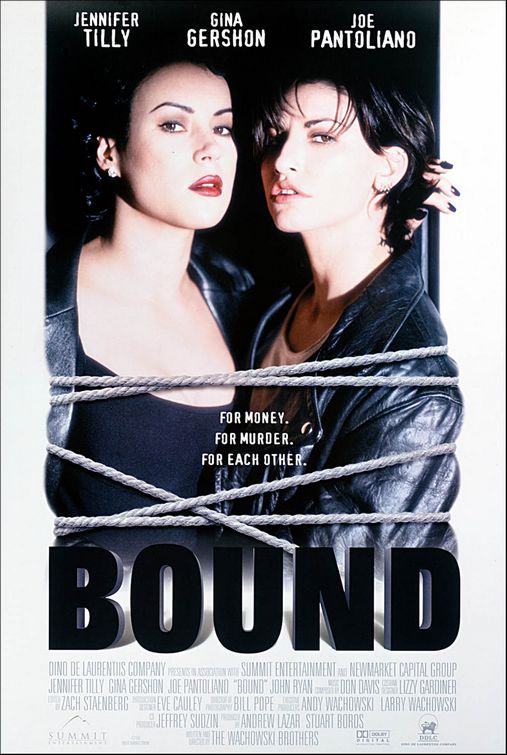 by Chris Feil
by Chris Feil
It's worth remembering that while the Wachowski's career has been defined by The Matrix and to a lesser extent their following sci-fi films, they actually started their careers in another genre entirely. Bound, their 1996 queer crime thriller starring Gina Gershon and Jennifer Tilly, launched them onto the scene as audacious visual stylists and smart thrillmakers. If noir has basically died in our current film landscape, this film represents one of its great final moments.
The Matrix may have changed the game for science fiction in a multitude of ways, but Bound is more singular in how it shakes up genre. Gershon and Tilly play to archetype, but Gershon's Corky follows traits traditionally prescribed to a male hero. Corky is even mistaken as a man by Joe Pantoliano's (also archetypal) gangster - the look of her even recalls a James Dean-type matinee idol after a prison stint. Tilly's Violet remains the underestimated femme fatale in maybe her very best performance. The magic though is in their smoldering chemistry, giving the kind of connection you can feel even in scenes they don't share.

By making its central love story between two women, it provides a heightened but natural context for noir's thematic staples of gender, trust, and societal fringes. Considering the social climate of when Bound was released, the lesbian love story is inherently political, their sexual desire still dangerous without being presented with judgment. The actual depiction of sex is tasteful but breathlessly sexy, just on the moody side of salacious. Nevertheless, turning what could have been an otherwise standard heteronormative tryst into the sapphic contributes to the urgency of the dynamic even if the story beats aren't revolutionary.
Which isn't to say that the film is without a stylized charge - can it really be noir without a distinct visual experience? The Wachowski's drew on Frank Miller's aesthetic of harsh angles and lurid monochrome, which would carry over into The Matrix (Tilly's first look feels like Trinity's daywear collection). Peter Greenaway's use of color as metaphor also feels like an influence here, blood reds and midnight blues conveying as much about the danger and longing as Gershon and Tilly's performances. Its some of the most expressive and inquisitive work of cinematographer Bill Pope's career.

But Bound is still fascinatingly displaced in time. Gershon is 50s greaser to Tilly's mid-90s bared midriff, Pantoliano in ill-fitting early-80s doublebreasted suit in his art deco-tinged apartment while 60s soul hums on the soundtrack. Without many cultural markers bleeding into the narrative, it could almost exist in any era since noir has existed. The thought given to these disparate influences complement the timelessness of noir's common themes - games of trust and hidden truth, the struggle to escape treacherous social environments unscathed. That the Wachowski's were able to tie it to a queer narrative is simple elegance.